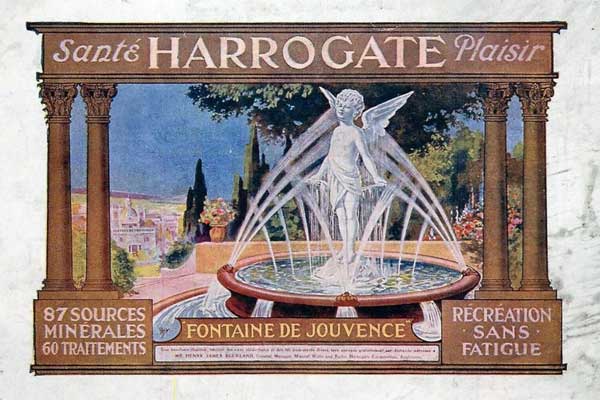The end of the Christmas period sparks the flame under people living in mince pie monotony, chocolate overloads, and those who keep getting confused over whether it’s a Monday or a Thursday. The new year marks the start of new beginnings and brings resolutions of health and happiness which marks the heritage of Harrogate as a spa town.
Harrogate has a legacy rich in the benefits of healthy living and looking after one’s self. The prosperity of Harrogate as a spa town dates back to the Sixteenth Century when in 1571 William Slingsby discovered the first spring. The High Harrogate spring became known as the Tewit Well and the water, very early on, was known for its medicinal properties. Queen Elizabeth I’s personal physician even recommended the waters for their healing nature. Writing in 1919 the British Medical Journal stated that there were eighty-seven springs in Harrogate, to this day we know that there are eighty-eight springs, the most in the world. The uniqueness to this many springs was the variety of different waters that they provided, however, they can be provided into two categories, sulphur and iron. The British Medical Journal noted that only sixteen of the different mineral waters were safe for consumption. The bathing qualities of the rest drew people in from far and wide, rich and poor, and saw Harrogate rise on the map of places to be.
The Royal Pump Room, another one of Harrogate’s famous springs, contains the greatest amount of sulphur, and was built in 1842.
The octagonal building was designed by Isaac Thomas Shutt whose family owned, what is now known as the Swan Hotel. An establishment that will be familiar as it featured in the previous issue as Agatha Christie stayed there during her hiatus, as it was only a short walk away from the baths which she believed would be good for her health. Christie was not the only famous person of note that retreated to the Royal Springs, Princess Alix of Hesse and her sister Princess Victoria of Battenburg were often frequenters of the Springs. Charles Dickens read at the Spa Rooms twice in 1858 and cabinet meetings were sometimes held there. Victorian culture was famous for Royalty amusing themselves by racing their bathchairs through the streets of Harrogate towards the Baths. Betty Lupton might not have been Royalty, but her name is synonymous with the Royal Pump Room, as she dispensed strong sulphur water from the well for six decades. Famously, in 1837, Lupton was given the honorary title ‘The Queen of the Well’.
In the beginning everybody had to pay for access to the water, but after the Harrogate Improvement Commissioners Board passed the 1841 Harrogate Act it was decided that the poor should not be excluded from the medicinal benefits of the sulphur water. This meant that there was a tap installed from the outside that could be used at any time, a tap that still exists to this day. The water led to the coining of the phrase ‘The Harrogate Cure’ which was stated to alleviate and cure many ailments of differing varieties, from gout to epilepsy to ulcers.
This led to the amount of people drinking Harrogate’s spa waters rising at an astounding rate during the middle of the Nineteenth Century, as per Doctor’s orders. In 1842 it was believed that 3,778 people had visited Harrogate to drink its waters, however, by 1867, this figure rose to 11,626. The Royal Pump Room famously saw around 15,000 visitors per year.
Going to the Pump Room was all the rage at the time and anyone who was anyone made sure to take up residence there for a period of time. It was that fashionable that Harrogate had its very own season during the interval between the end of the London Season and the Shooting Season. It saw the upper classes stopping at the spas on their way up to their shooting estates in the North. The Royal Pump Room built a Promenade and Pleasure Gardens for such an occasion. Gardens that would be home to bands who were prescribed to be the entertainment for those visiting, and interestingly it was Harrogate Brass Band that was one of the main sources of entertainment from 1842 to 1861, they were given the nickname Spa Water Band.
The guests would visit the Pump Room for their first tumbler of water at around seven in the morning, walk about the gardens listening to the bands before their second and sometimes third glass of water. The same pattern could be seen throughout the day with different exercises and activities breaking up the water treatments. Who knew turning on the tap came with such heritage…




